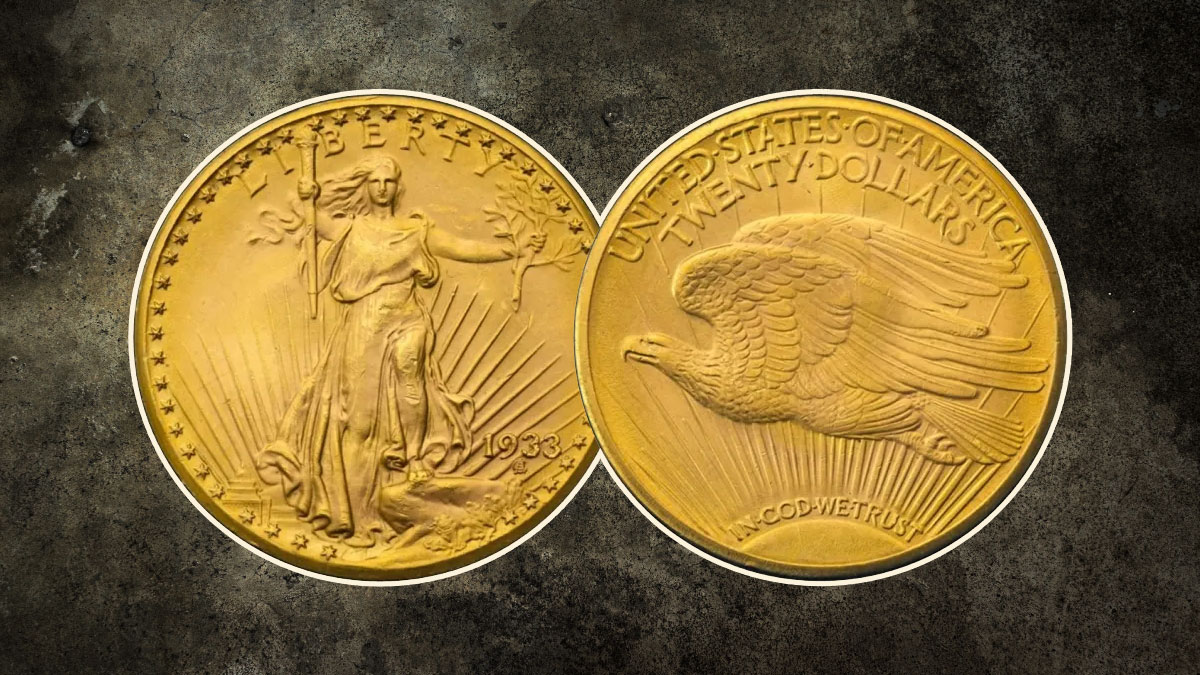
We write about the 1933 Saint-Gaudens $20 double eagle coin, one of American numismatics’ most notorious coins. The 1933 double eagle, a $20 gold coin from the United States, holds a unique status in numismatic history. Despite being minted in substantial numbers during the Great Depression, none were officially circulated, with almost all slated for melting. However, some evaded this fate, guiding to a story of rarity and intrigue.
It was not just an accomplishment that American sculptor Augustus Saint-Gaudens would have a role in designing that strategy and playing American coinage. Famous sculptor, well-known in his own right but further so in the past, the world’s greatest sculptor despised the bureaucracy of the Mint and accepted even smaller its chief engraver. He refused more commissions than he was qualified to take. Commissions on even more favorable terms. Also, he was dying.
In 1900, at 52, Saint-Gaudens returned to the U.S. due to illness, unaware it was rectal cancer. President Roosevelt urged him to revitalize American coinage. Despite declining health, Saint-Gaudens began work but died in 1907 before finishing. Only two designs were completed, with the double eagle needing adjustments. Miscommunication led to a lower-relief version being produced and minted until the early 1930s. With a $20 value, the coin was not widely used in daily transactions due to its high denomination compared to the cost of goods at the time.
History of the 1933 Double Eagle
In the wake of the Great Depression, President Franklin D. Roosevelt took drastic measures, including Executive Order 6102 in 1933, which required the surrender of gold holdings. This led to the melting down of most 1933 double eagles. However, a few clandestinely made their way into the hands of collectors, sparking a Secret Service investigation. The subsequent saga involved theft, circulation among collectors, and eventual recovery, though not without controversy.
Production:
Following Roosevelt’s orders and subsequent legislation, the minting of gold coins for general circulation ceased. The 1933 double eagles, struck amidst these changes, were largely destroyed, with only a few exceptions. Despite efforts to recall and melt them down, some escaped, becoming highly coveted rarities in the world of coin collecting.
How much is the 1933 Double Eagle worth?
The Double Eagle, a 1933-minted gold coin, brought about $18.9 million at auction in 2021. The primary basis of its worth is its history.
Why is the 1933 Double Eagle Valuable?
Unusual and unprecedented, Presidential Directive 6102 (1933) ordered the release of all gold coins to the Treasury. The most commonly utilized gold coins that were always in use before 1933 were the Gold Double Eagles, which were the most famous gold coins in circulation at the time.
Identifying a Genuine 1933 Double Eagle
To spot a real 1933 Double Eagle, look for its light-colored, orange-yellow color with frosted designs greatly and shiny-like on the front side. The front features Liberty having a torch and olive branch, with the U.S. Capitol in the background and 46 stars circling. On the back, you’ll notice a bald eagle flying with rays from the sun and a motto. These designs were created by Augustus Saint-Gaudens in 1907.
Also Read – 1794 Flowing Hair Silver Dollar: A Collector’s Guide
Conclusion
The 1933 Double Eagle is a unique sign of American numismatics that represents a story of rarity and intrigue. Its value, monetarily and historically, is amazing, making it a prized possession for collectors worldwide. Understanding its unique history, providing authenticity, and legal implications are important parts of organizing this iconic coin. With careful research, professional advice, and a passion for learning, collectors can navigate the complexities of developing and maintaining this extraordinary piece of American coinage history.
